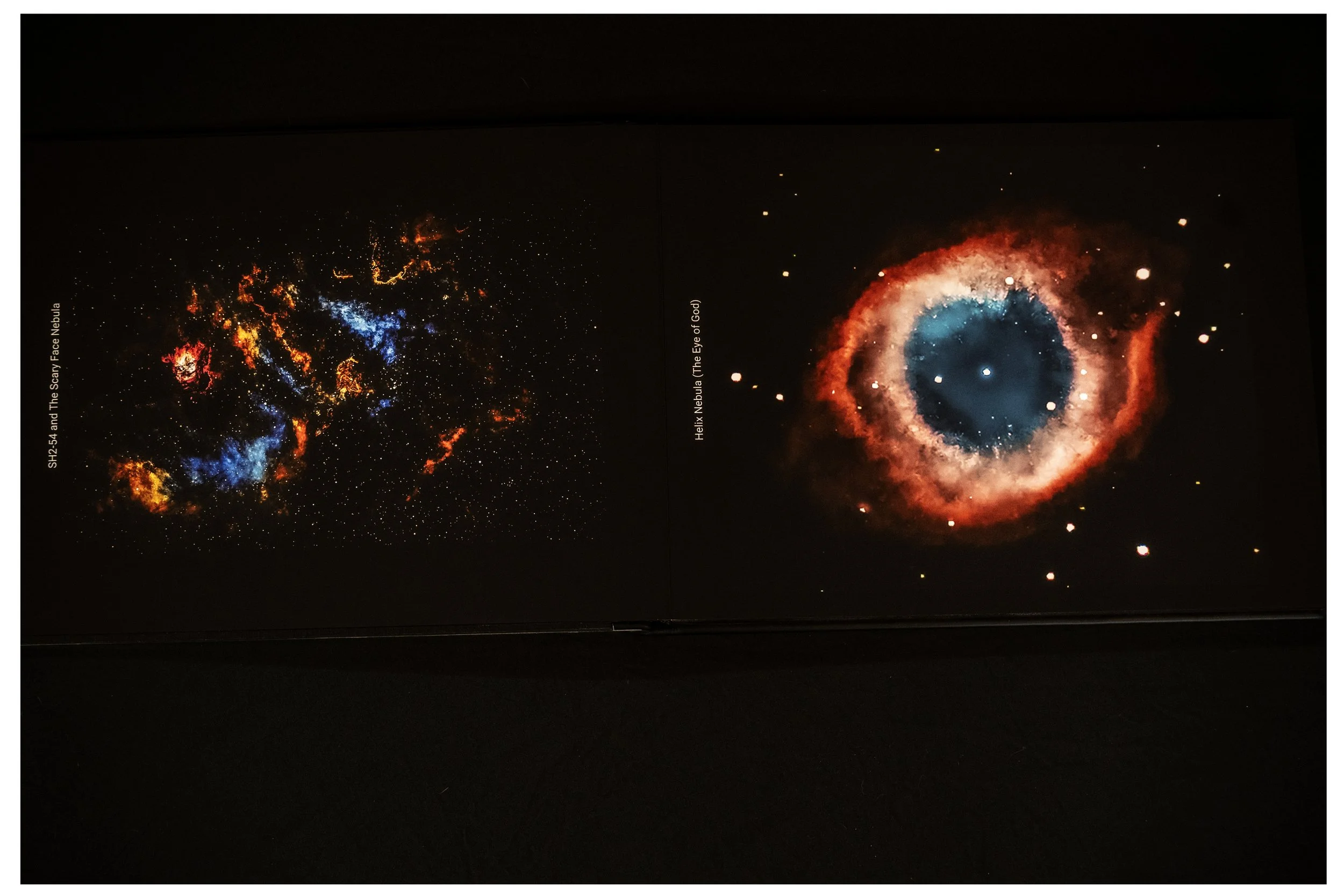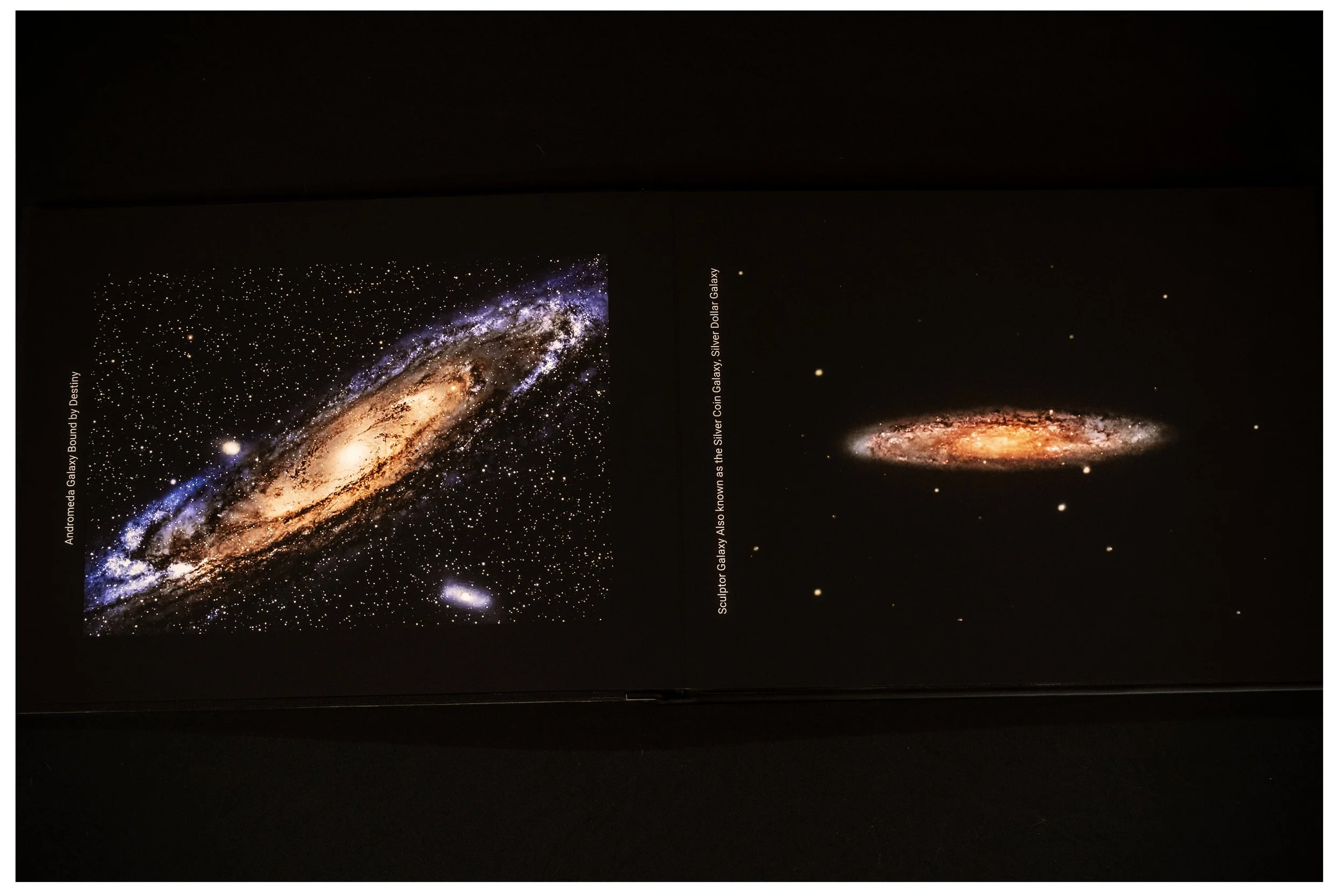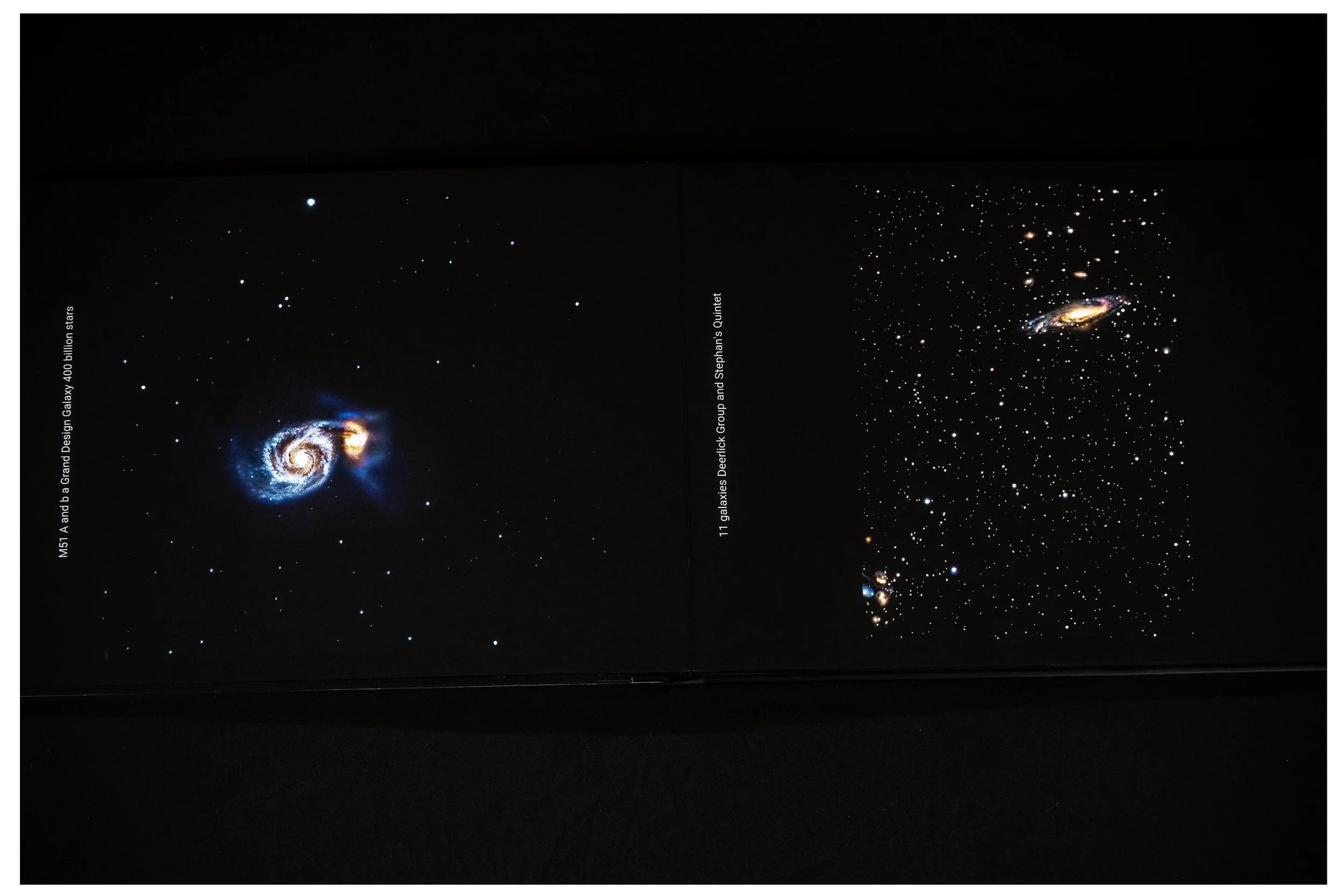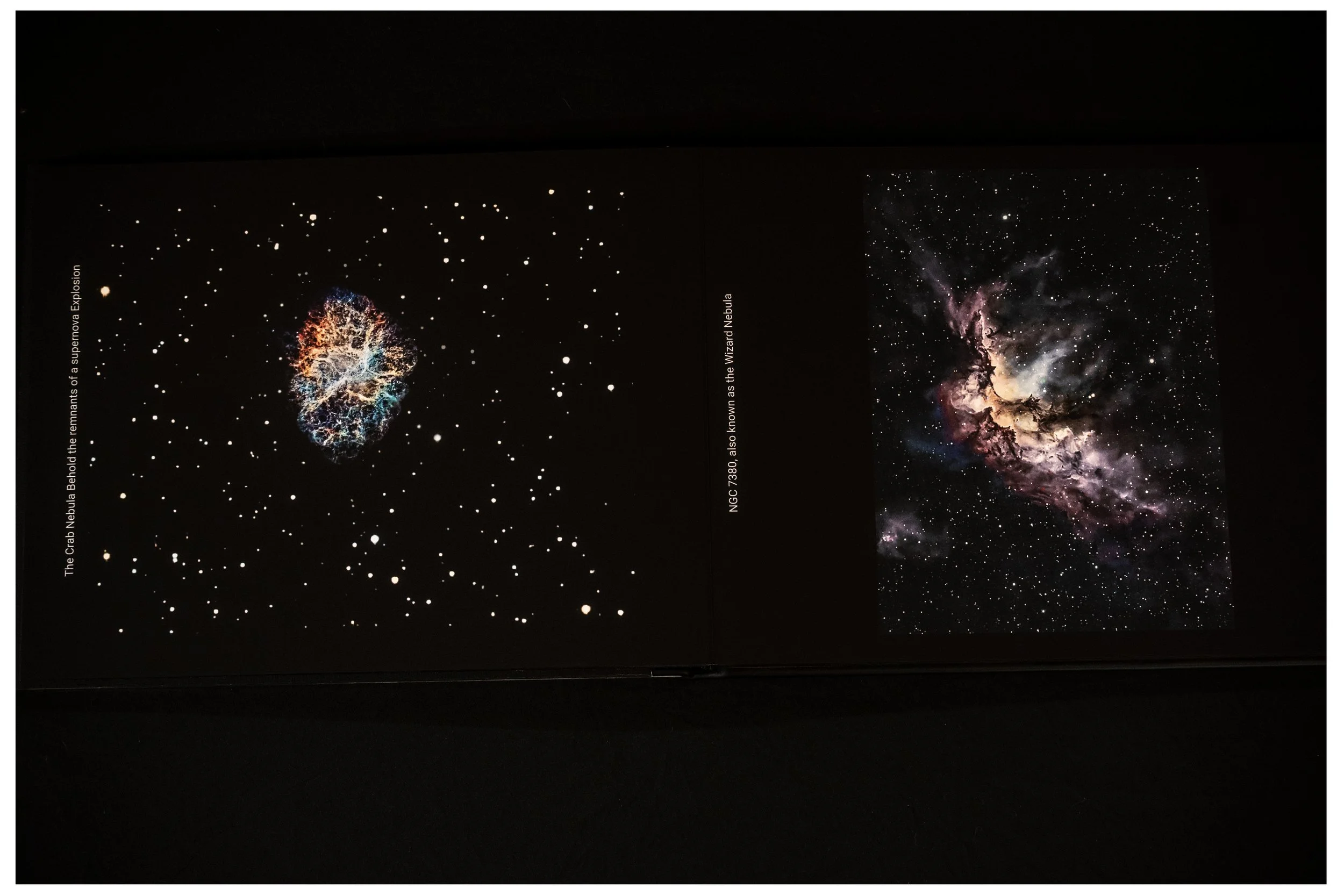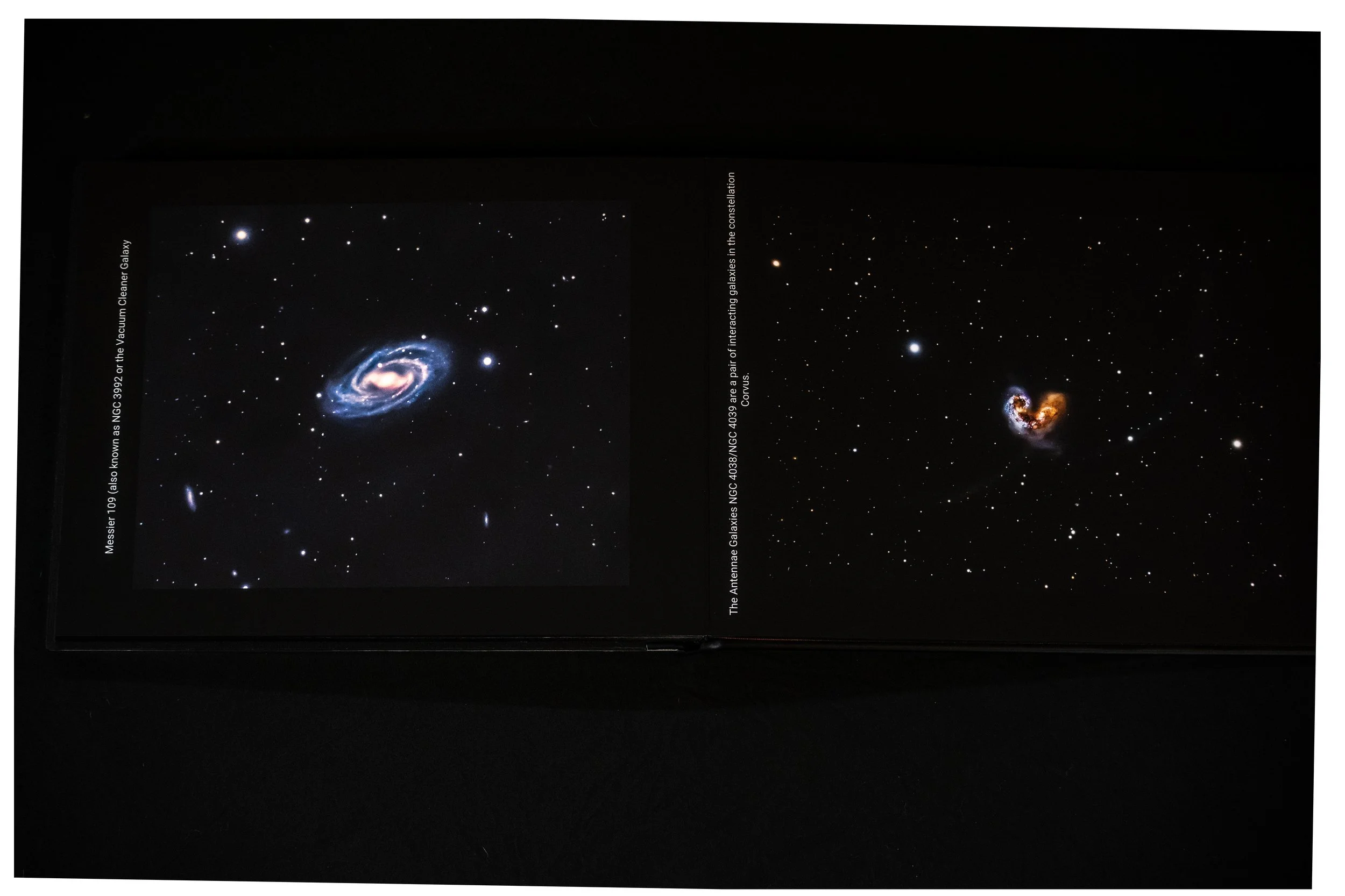
Reflections In The Stars Of Our Soul
Dedicated to those who combat ignorance with knowledge, to illuminate minds with understanding, and to foster a world where awareness overcomes darkness.
Metal print Cover 11x14" / 28x35cm Art Print Giclée based Fine Art Paper with a low sheen, Matte coating. Genuine Leather with silver Debossing on the back cover and uv printing on red linen, with Gilded Edge in black.
“If people sat outside and looked at the stars each night, I’ll bet they’d live a lot differently.” – Bill Watterson
This book is an invitation to step beyond the narrow boundaries of Earth and gaze into the immeasurable expanse of the universe. It is a journey not just through space and time, but through the questions that have haunted and inspired humanity since the beginning of consciousness: Why are we here? What is our place in the cosmos? How do we find meaning amid the stars?
To approach answers to these questions, we must first look outward. In doing so, we encounter a universe that is vast, cold, and largely indifferent to our existence. It is a place of unimaginable scales, both in time and distance, where galaxies collide, stars are born in clouds of gas and dust, and entire worlds vanish without notice. And yet, in that very indifference lies a profound truth: we are not separate from the universe, we are a part of it—its product, its witness, and perhaps, in some sense, its voice.
We are living in a rare and luminous chapter of cosmic history: the age of stars. These stellar giants, blazing across the void, serve as both beacons and forges. Within their cores, elements are created—carbon, oxygen, nitrogen, iron—the very building blocks of planets, oceans, plants, and people. When stars die, they do not vanish quietly; they explode, scattering their enriched remnants across the galaxy, seeding new generations of stars and the potential for life. It is no metaphor to say that we are made of stardust; it is a scientific truth that binds us intimately to the cosmos.
In exploring deep space, whether through images like the Pillars of Creation or the pale light of distant galaxies, we are also exploring deep time. We see not just what is, but what was—light that has traveled for millions or even billions of years to reach us. To look at the stars is to look into the past, to witness the unfolding story of the universe, and to recognize that we are latecomers to an ancient, ongoing drama. Yet despite our brief presence, we are capable of reflecting on that story, of asking questions no star or galaxy can form, and of assigning meaning to existence itself.
This book is built on the idea that science and wonder are not opposites, but partners. The more we understand about the physics of the universe, the more awe-inspiring it becomes. To chart the birth of a star, to map the structure of a galaxy, or to speculate on the conditions of alien worlds is to engage in a kind of modern mythology—one based not in fantasy, but in discovery. And in every discovery, there is a mirror held up to ourselves.
In the end, to study the universe is to participate in it consciously. To wonder, to explore, to seek—these are deeply human traits, and they are perhaps the most extraordinary thing the universe has yet produced. Through this exploration, we not only begin to understand the cosmos; we begin to understand ourselves.




